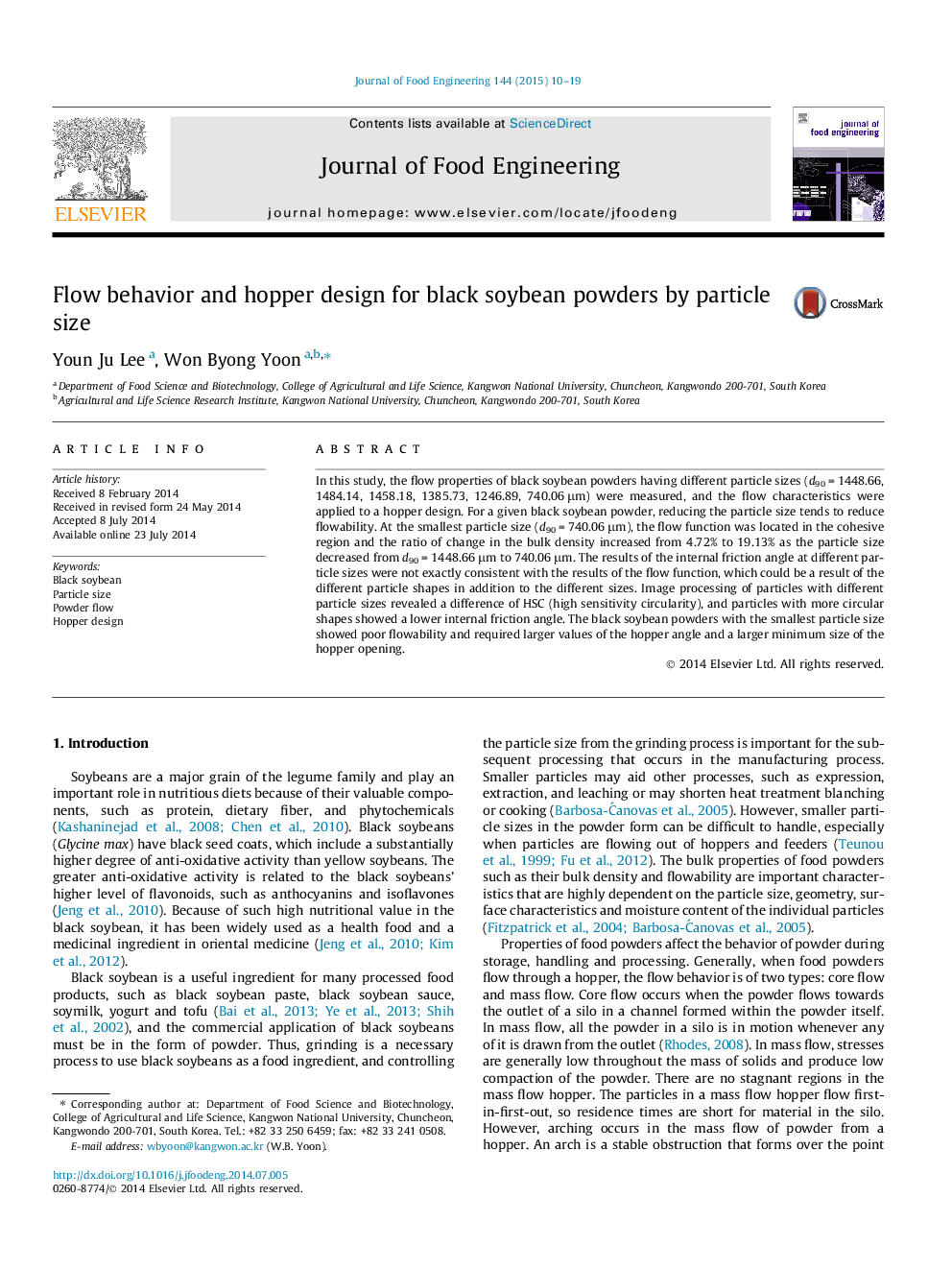| Article ID | Journal | Published Year | Pages | File Type |
|---|---|---|---|---|
| 223002 | Journal of Food Engineering | 2015 | 10 Pages |
•The consolidation method successfully analyzed the flow properties of powders obtained from whole black soybeans.•The black soybean powder with particle size below 0.43 mm showed low flow index (3.28) and the flow function was in the cohesive flow region.•At the small particle size (740.06 μm), the high sensitivity circularity was observed and the high HSC affected the internal friction angle.•The smallest particle size (d90 = 740.06 μm) required the largest hopper angle (32.40°) and opening size (1.14 m).
In this study, the flow properties of black soybean powders having different particle sizes (d90 = 1448.66, 1484.14, 1458.18, 1385.73, 1246.89, 740.06 μm) were measured, and the flow characteristics were applied to a hopper design. For a given black soybean powder, reducing the particle size tends to reduce flowability. At the smallest particle size (d90 = 740.06 μm), the flow function was located in the cohesive region and the ratio of change in the bulk density increased from 4.72% to 19.13% as the particle size decreased from d90 = 1448.66 μm to 740.06 μm. The results of the internal friction angle at different particle sizes were not exactly consistent with the results of the flow function, which could be a result of the different particle shapes in addition to the different sizes. Image processing of particles with different particle sizes revealed a difference of HSC (high sensitivity circularity), and particles with more circular shapes showed a lower internal friction angle. The black soybean powders with the smallest particle size showed poor flowability and required larger values of the hopper angle and a larger minimum size of the hopper opening.
